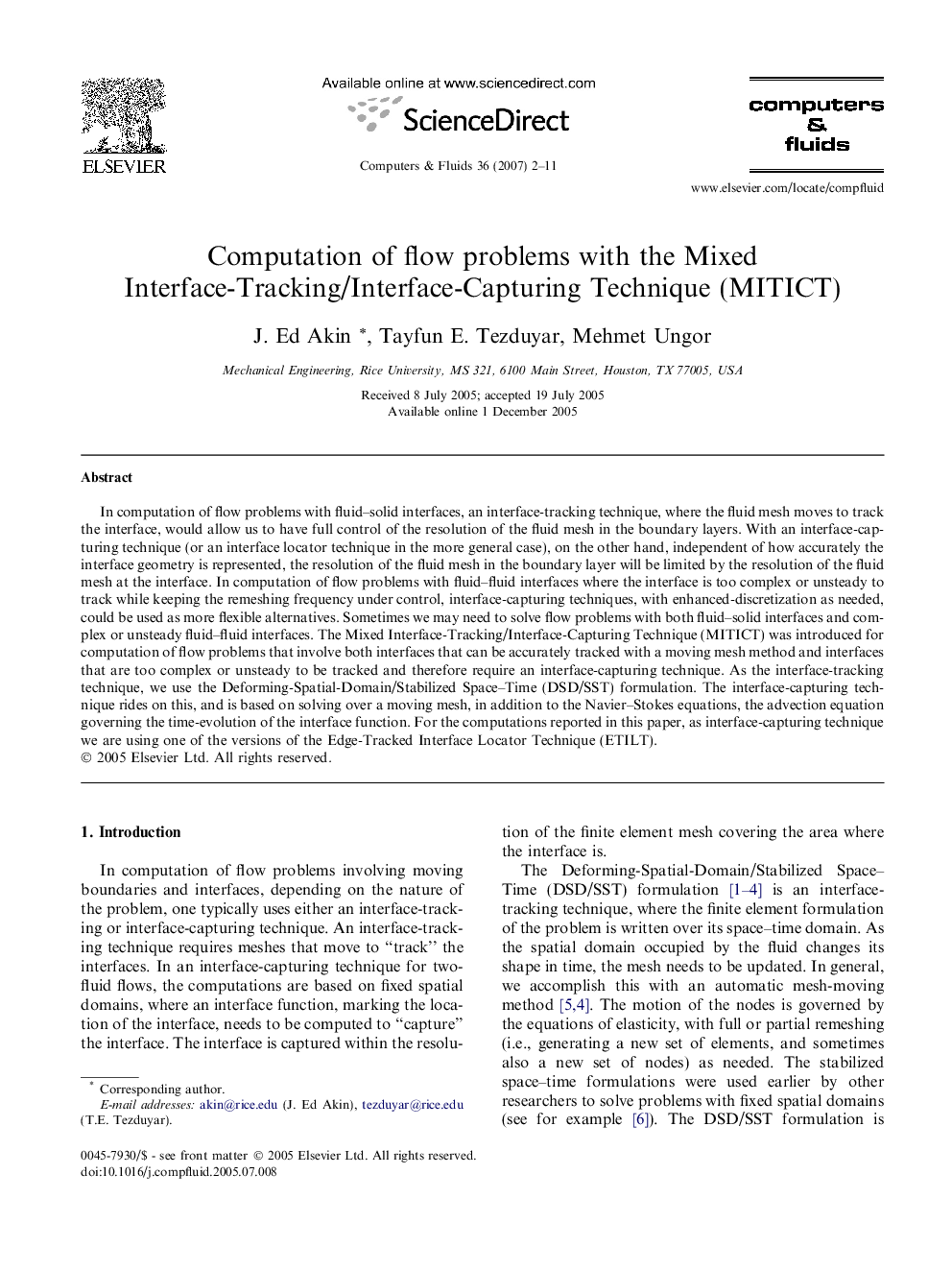| کد مقاله | کد نشریه | سال انتشار | مقاله انگلیسی | نسخه تمام متن |
|---|---|---|---|---|
| 756971 | 896268 | 2007 | 10 صفحه PDF | دانلود رایگان |

In computation of flow problems with fluid–solid interfaces, an interface-tracking technique, where the fluid mesh moves to track the interface, would allow us to have full control of the resolution of the fluid mesh in the boundary layers. With an interface-capturing technique (or an interface locator technique in the more general case), on the other hand, independent of how accurately the interface geometry is represented, the resolution of the fluid mesh in the boundary layer will be limited by the resolution of the fluid mesh at the interface. In computation of flow problems with fluid–fluid interfaces where the interface is too complex or unsteady to track while keeping the remeshing frequency under control, interface-capturing techniques, with enhanced-discretization as needed, could be used as more flexible alternatives. Sometimes we may need to solve flow problems with both fluid–solid interfaces and complex or unsteady fluid–fluid interfaces. The Mixed Interface-Tracking/Interface-Capturing Technique (MITICT) was introduced for computation of flow problems that involve both interfaces that can be accurately tracked with a moving mesh method and interfaces that are too complex or unsteady to be tracked and therefore require an interface-capturing technique. As the interface-tracking technique, we use the Deforming-Spatial-Domain/Stabilized Space–Time (DSD/SST) formulation. The interface-capturing technique rides on this, and is based on solving over a moving mesh, in addition to the Navier–Stokes equations, the advection equation governing the time-evolution of the interface function. For the computations reported in this paper, as interface-capturing technique we are using one of the versions of the Edge-Tracked Interface Locator Technique (ETILT).
Journal: Computers & Fluids - Volume 36, Issue 1, January 2007, Pages 2–11